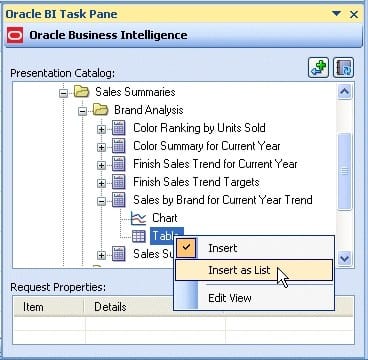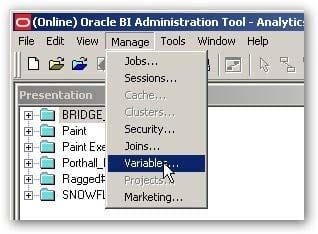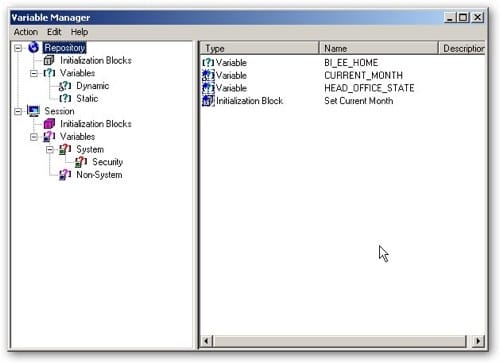Exam Details
Exam Code
:1Z0-591Exam Name
:Oracle Business Intelligence Foundation Suite 11g EssentialsCertification
:Oracle CertificationsVendor
:OracleTotal Questions
:120 Q&AsLast Updated
:Mar 26, 2025
Oracle Oracle Certifications 1Z0-591 Questions & Answers
-
Question 41:
How do Dynamic Repository Variables differ from Static Repository Variables?
A. Dynamic Repository Variables are not initialized by the Initialization Block.
B. Dynamic Repository Variables cannot be used in the Expression Builder.
C. Dynamic Repository Variables can be changed by data that is returned from queries.
D. Dynamic Repository Variables cannot be used in a CASE statement.
-
Question 42:
Which three components are part of a cluster server?
A. Master Server
B. Repository Publishing Directory
C. Primary Cluster Controller
D. Web Server
E. Server request Controller
-
Question 43:
Under what circumstances would you model within the BI environment to include transactional data directly?
A. When the customer needs near real-time data to support decision making in a fast changing environment
B. When the customer is not prepared to spend budget on data-warehousing
C. When the complexity of operational schema does not allow modeling in the BI repository
D. When it is not possible to query against a transactional system
-
Question 44:
What are the two capabilities that users can apply to an Analysis when working within Plug- In for MS Office?
A. Edit Analysis
B. Refresh All
C. Edit Prompts and Levels
D. Publish
-
Question 45:
When creating a new dimensional hierarchy in the BI Administration tool, right click the dimension, then select "New Object" What must be selected next?
A. Logical Key
B. Parent Level
C. Child Level
D. Dynamic Key
-
Question 46:
What are the two types of Repository Variables?
A. System
B. Non System
C. Static
D. Dynamic
-
Question 47:
Which OBIEE capability enables developers to build Aggregate tables?
A. Aggregate Persistence Wizard
B. Expression Builder
C. Table Builder
D. Query Analyzer
-
Question 48:
Where is Cache in OBIEE located?
A. In relational database
B. It is local disk-based.
C. In dynamic aggregate
D. In memory cache
-
Question 49:
A customer always wants Aggregate Table l to be looked at first to see if it can answer the query. What should be done to make sure this happens?
A. Make Aggregate Table 1 the first table in the list of Logical Table Sources.
B. Do not map the logical level in the Content tab.
C. Set the Priority Group to 0.
D. Set the Priority Croup to 5.
-
Question 50:
A company's Database Administrator has divided the region table into two tables so that the region "West" is in one table and all the other regions are in another single table. What kind of partition is being used?
A. Fact-based
B. Time-based
C. Mixed
D. Complex
Related Exams:
1Z0-020
Oracle8i: New Features for Administrators1Z0-023
Architecture and Administration1Z0-024
Performance Tuning1Z0-025
Backup and Recovery1Z0-026
Network Administration1Z0-034
Upgrade Oracle9i/10g OCA to Oracle Database OCP1Z0-036
Managing Oracle9i on Linux1Z0-041
Oracle Database 10g: DBA Assessment1Z0-052
Oracle Database 11g: Administration Workshop I1Z0-053
Oracle Database 11g: Administration II
Tips on How to Prepare for the Exams
Nowadays, the certification exams become more and more important and required by more and more enterprises when applying for a job. But how to prepare for the exam effectively? How to prepare for the exam in a short time with less efforts? How to get a ideal result and how to find the most reliable resources? Here on Vcedump.com, you will find all the answers. Vcedump.com provide not only Oracle exam questions, answers and explanations but also complete assistance on your exam preparation and certification application. If you are confused on your 1Z0-591 exam preparations and Oracle certification application, do not hesitate to visit our Vcedump.com to find your solutions here.


